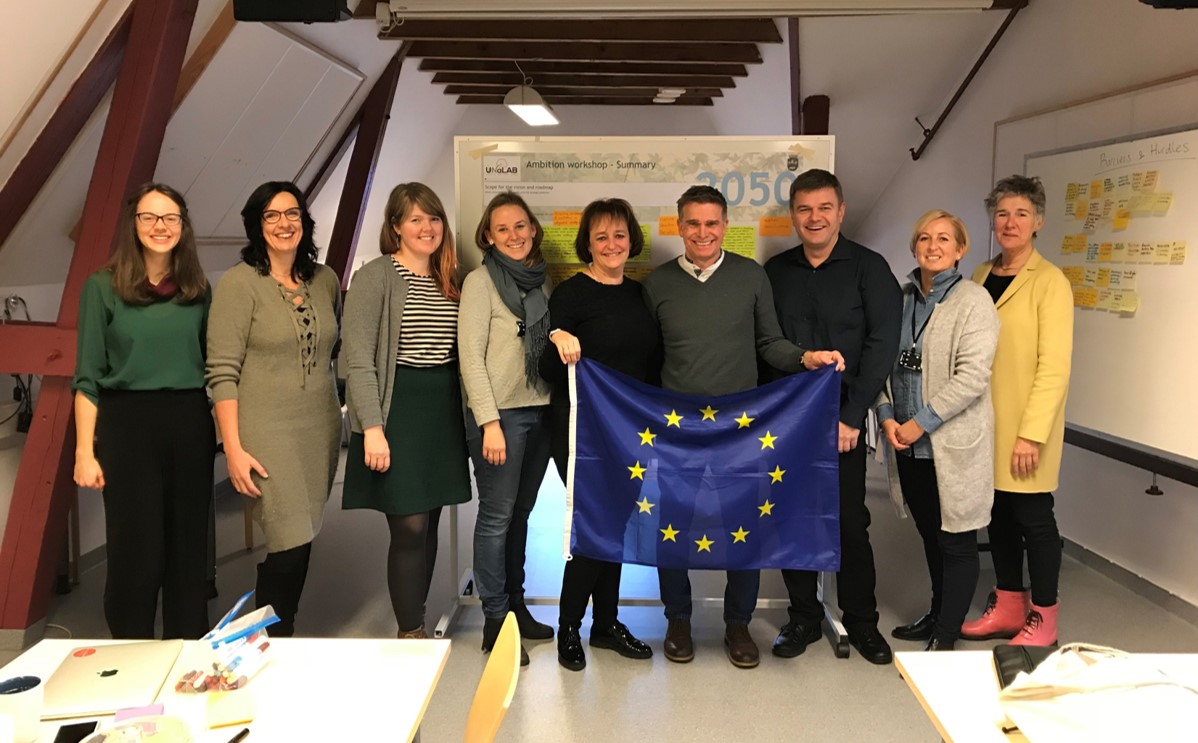
The Perspective of a Follower City – Creating a Roadmap for Stavanger 2050
- Tue, 10/07/2018
The Roadmapping process kicked off in December 2017 with researchers from the Technical University of Eindhoven coming to Stavanger to conduct a series of workshops resulting in the overall ambition for sustainable urban development and climate change adaptation through NBS: Stavanger 2050-Urban resilience through nature and knowledge.
Separate workshops for internal and external stakeholders, politicians and strategic management brought together a rich output that was summarized in three strategic ambitions for Stavanger.
Stavanger aims to:
- Create a climate resilient city with respect to extreme weather events and sea level rise.
- Use nature as structure of the city to ensure rich biodiversity, healthy, active citizens and enjoyable green areas in the urban environment.
- Utilise the co-benefits of Nature-based solutions to achieve the overall goal of a sustainable, liveable city.
This June, building on the strategic ambitions, the researchers from TUe came back to Stavanger to support the development of a vision of the desired future scenario for Stavanger in 2050.
Following an internal workshop for the UNaLab project team in Stavanger, both internal and external stakeholders took part in a large workshop where the vision for a climate resilient, sustainable Stavanger using NBS was developed.
In the workshop urban planners, property developers, manufacturers, consultants, engineers and researchers explored how storm water can be seen as a resource in Stavanger. We discussed how the future Stavanger will organize itself and co-create its living environment, as well as the importance of an increased awareness of the value of nature and ecosystem services. Also, we looked at the future possibilities to tackle sea level rise in Stavanger.
Throughout the workshop, the vision and ideas for each topic being discussed were visualized by a designer on a large screen for all to see. This was a useful and fun approach which made the abstract idea of a vision more tangible. The vision and the visualisation that emerged from the workshop show Stavanger as a living organism with water and green as the veins of the city and the central lake, Breiavatnet, as the heart:
![]()
“In 2050 Stavanger is resilient to flooding from the rising sea level and storm water. The ‘green and blue’ structures are connected and functions well to deliver all benefits for citizens, such as healthy living, well being and biodiversity. Nature is integrated in the city and water is valued as a positive element.
In 2050 the social fabric of Stavanger enables a holistic approach to climate resilience, with the inclusion of all knowledge in the region used for the same purpose: to free space for nature based solutions. Knowledge on the value of nature is flowing freely through the veins and is shared between everybody.”
Alongside the researchers from TUe, Fraunhofer came to Stavanger in June to conduct their on-site assessment. This is a key step in the roadmapping, as it defines our status quo and helps identify where we need to focus our efforts to achieve our ambitions for 2050. Through a total of 24 interviews with key internal and external stakeholders, and information gathered on key indicators and potential action fields in Stavanger, the Fraunhofer team was able to get a broad picture of where we stand on NBS in Stavanger today. The interviews covered a wide range of people and backgrounds, from property developers, consultants and research institutes, to municipal experts on co-creation, Smart city and public green spaces, to mention a few. The wide selection of participants really underlines the cross-sectorial nature of working with NBS and in many ways the system analysis broadened our view of who we need to include as stakeholders when moving forward with UNaLab and NBS.
![]()
The findings of the on-site assessment showed that Stavanger is quite well equipped to move forward with the implementation of NBS. At the same time, the analysis identified topics and intervention areas where we can do more. The on-site was rounded off with a cross-sectorial workshop for key internal stakeholders to look at what actions could be taken to move forward in the short term, without waiting for the complete roadmap for 2050. The workshop resulted in a few key intervention areas to follow up on to keep moving in the direction of a wider application of nature based solutions in Stavanger, such as working more closely on potential projects for river daylighting, looking at setting up a NBS demonstration site and reviewing our current tool to promote blue-green solutions, the blue-green factor.
In a year, Stavanger and the other follower cities will go through the final stages of the Roadmapping process with on-site workshops to develop the final roadmap and a project portfolio to go with it. Hopefully, by then, we are already well on the way based on what we have learned so far and ready to make an ambitious roadmap for 2050.